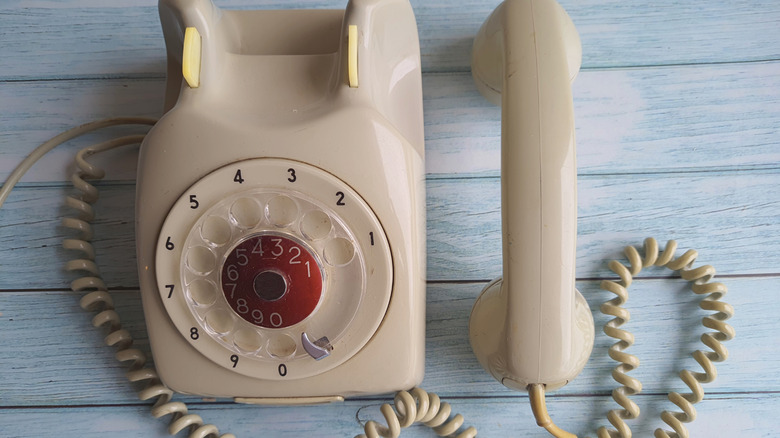What Is A 'Wind Phone'?
Legacy phone stations are popping up in random places, like along the scenic landscape of Dumas Bay. Stumbling upon one, you might find yourself confused and intrigued. Mounted to a beautiful wooden box is an old analog-style phone that's not plugged in or connected to anything. Pick up the receiver and you won't be met with a dial tone but instead silence. It's called a 'wind phone' and it has a very specific purpose — to allow those grieving to speak to their loved ones who have passed away. It's inspired by an original creation, called "kaze no denwa," or telephone of the wind, first developed by Japan's Itaru Sasaki.
The original was meant to allow Sasaki to speak to his cousin, who had died of cancer. He wanted to gain some closure and peace by speaking and sharing experiences, much as you would with someone still alive. Imagine being able to share a unique moment that recently happened with someone no longer here. Or ask questions, elaborate, or simply speak, holding a regular conversation like someone was on the other end. After setting up the first installation, an old-fashioned phone booth in his garden, Sasaki began to feel comfort and healing. Eventually, he relocated the setup to a windy hill where other mourners could use it, namely those who lost loved ones in the 2011 Tōhoku earthquake and subsequent tsunami — events that often naturally go hand-in-hand. As more people used it and felt its natural comforts, it became a shrine and a cultural phenomenon. Now, more installations are being erected all over the world, including the recent one in Federal Way. Modern phones have evolved considerably since the old rotary and dial phones, but there's something fitting about going back in time for these installations.
What can a wind phone actually do for grief?
Grief is a strange thing. Everyone processes it differently and you can feel it for many reasons, not just the loss of someone in your life. You can grieve after big changes, like losing a job, or even grieve losing important items. But when you lose someone special, suddenly, that can leave a lot of unfinished business behind, particularly things left unsaid. Talking it through, even out loud and to no one in particular can help process some of the pain and grief — it can be good for your mental health, as well. In addition, scientists have found that nature is a natural antidepressant. Having these phones in nature, opening a personal line of communication is precisely the idea behind Sasaki's original installation.
Similar phones have appeared in other locations, like one in Olympia, Washington installed by Corey Dembeck in 2020. Originally, Dembeck snuck it into the park as a memorial for a friend's daughter who passed away. The city recognized its importance and worked with him to make an official installation, complete with a signage board and plaque. That plaque starts with, "This phone is for everyone who has ever lost a loved one." The stories of these phones have inspired further creations, with over 360 locations in the United States and over 150 others worldwide. Next time you're out hiking or exploring, if you come across a phone, maybe take the opportunity to share things left unsaid with someone special. It's a beautiful sentiment and it makes perfect sense why wind phones have become so beloved.

